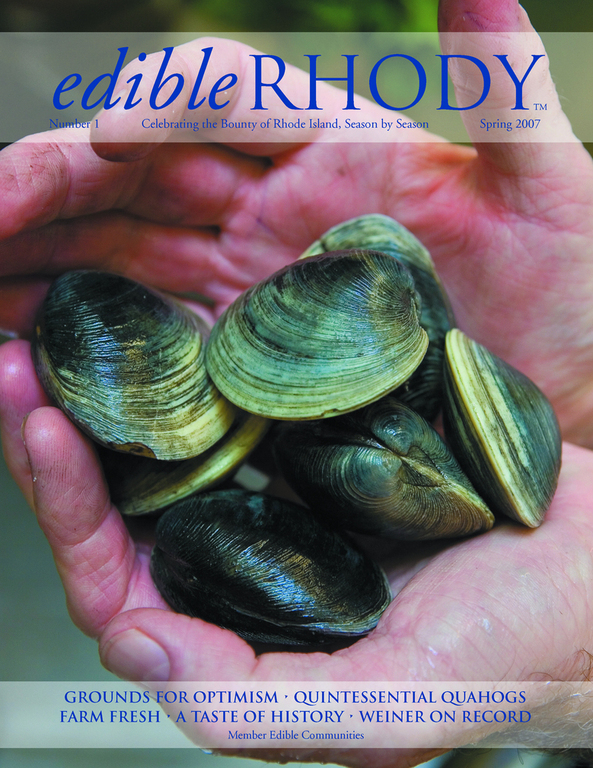The first issue of Edible Rhody featured an interview with Johanne Killeen and George Germon, owners of Al Forno Restaurant; an in-depth story on quahogs, and a sampling of the community-supported agriculture (CSA) programs run by local farms, among other items.
Nicole Vitello’s Manic Organic Farms, in Tiverton, was part of the CSA article, and she was pleased to see a publication encouraging consumers to buy local foods.
For the last two years, Vitello said, she has noticed an increase in the number of people interested in her CSA program, which allows customers to buy a share of the diverse selection of crops from June to October – $575 for a full share and $310 for half a share for the season.
And the more people read about CSAs, she said, the more credibility the programs will have.
That is what Edible Rhody publisher Alex Corcoran said he hopes to accomplish.
“In telling the stories of local food producers … the hope is that people will consciously or subconsciously choose local,” Corcoran said, adding that another goal of the publication is to help sustain local agriculture so that it is available for future generations.
Corcoran is new to Rhode Island, having moved from Portland, Ore., just 10 months ago. He decided he would start the magazine after meeting the founders of Edible Communities Inc. in Portland, just two weeks before he was moving across country for his wife’s new job with a jewelry manufacturer in North Attleboro.
Edible Communities Inc. is a publishing and information services company based in Santa Fe, N.M., that helps interested people anywhere in the United States and Canada to develop their own Edible publications. There are 20 magazines in production, including Edible Boston and Edible Cape Cod.
Corcoran decided he would publish one in Rhode Island. He has been interested in the politics of food for a long time, he said, and since the mad cow disease scare in the 1990s, he has read extensively about food sources and become more careful in his shopping.
Through publications such as Edible Rhody, he said, he feels he can help build food security.
If the small, local farms fail because it’s too much work for too little money and then they sell to developers, he said, “we end up in a situation where all of our food is coming from far away.” That could be a particular problem, he said, if oil prices continue to rise.
“The nation couldn’t handle that type of inflation in the cost of food” if a dramatic increase in the cost of oil is passed on to the consumer, he added.
But before Edible Rhody plays a part in ensuring food security, Corcoran has to make sure the quarterly magazine creates enough revenue to survive.
Like most publications, Edible Rhody depends primarily on advertising sales to cover the costs of printing, content and production. Corcoran originally wanted to sell the magazine at newsstands, but then, he said, he realized he could give a better value to advertisers by giving the first 20,000 magazines away for free, reaching a broader audience.
Making people pay at newsstands wouldn’t ensure that 20,000 people would buy them, he noted – especially since they’d never seen the publication before.
Corcoran said he lost money out of his pocket on the first issue, which came out in March. He had never launched a magazine before. His background is in the arts. He studied theater and music at Carnegie Mellon University in Pittsburgh and was an actor for awhile before becoming a real estate investor and developer.
Corcoran doubled ad sales for the second issue and now he is looking for a part-time ad salesman, though he worries that he won’t be able to attract someone experienced.
So for now, Edible Rhody is a one-man show, except for having a part-time editor, part-time layout artist and a part-time copy editor for the four editions produced per year. Corcoran sells the ads, manages the circulation and marketing and edits content.
Subscriptions are $28 per year, he said, but he’s still giving out the magazine for free. The plan is to get them in front of as many people as possible, so they’ll begin to recognize it and want to get it delivered at home.













